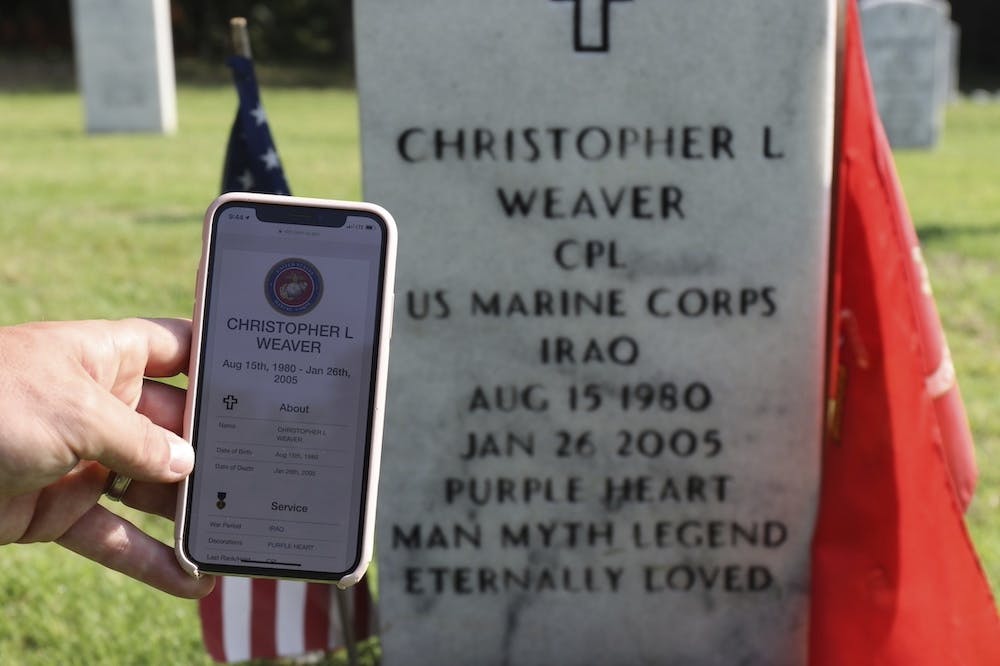VA Cemetery Cleanup Effort Features Veteran Legacy Memorial Program
The newly launched Veterans Legacy Memorial builds atop agency databases to create a living tribute to America’s veterans.

The Department of Veterans Affairs highlighted a recently launched living digital tribute for America’s veterans during a volunteer event aimed at beautifying the grave sites around national cemeteries on the National Day of Volunteering.
The National Cemetery Administration in partnership with Carry The Load convened Wednesday across the U.S. at 40 national cemeteries where volunteers scrubbed grave stones and performed other cleanup efforts. VA encouraged volunteers to learn about the veterans’ grave sites volunteers encountered through the new Veterans Legacy Memorial platform that focuses on remembrance and reflection.
IT reforms and data integration across the federal government often center on process improvements — refining analysis or service management. Designed under the guidance of Undersecretary for Memorial Affairs Randy Reeves, VLM is allowing relatives of veterans to honor the lives of loved ones who dedicated themselves to service in the U.S. armed forces.
“It is said we all die two deaths — we die the first time when breath leaves us, but we only truly die when someone no longer speaks our name or tells our story,” said Reeves at the 9/11 service event at Quantico National Cemetery in Virginia. Noting the significance of memory, Reeves explained that VLM was designed so that the story of America’s veterans can be maintained with the dignity they deserve.
“We have to be storytellers, each and every one of us, when talking about veterans,” Reeves said.
Building atop the NCA’s Burial Operations Support System, VLM serves as a digital memorial for all veterans interred within the 138 national cemeteries maintained by the VA. The application automatically populates the burial location, branch of service and rank for every veteran, allowing relatives to access a digital memorial for their loved ones both remotely and at their gravesites.
“The Veterans Legacy Memorial is an ideal way to tell the story … and we do it in such a format that anyone, anywhere can access that information,” Reeves said. This allows relatives who might be restricted by geographic distance or physical limitation to view a living memorial for their loved one any time they choose.
As much as memory carries on with the relatives of those who have passed away, VLM is designed to be an ever-growing project that allows relatives to celebrate the full lives of their loved ones. While the first iteration of VLM was released in August 2019, ongoing efforts include building out the application so as to carry personal details and life histories for America’s veterans, Reeves said. VLM is also slated for future expansion to accommodate profiles for veterans buried in state and local cemeteries, as well as private grounds.
“As we move forward, the Veterans Legacy Memorial platform will actually be able to add more information so we can see what those service members did for our country,” Reeves said. “I hope in the future we’ll even be able to add information for what they did after leaving service.”
Reeves also mentioned the positive feedback he’s received from the family members of veterans, particularly in being able to personally engage with keeping their loved ones’ memories alive.
“The feedback I’ve gotten from family members is that they’re excited about being able to participate,” Reeves said. Above all else, VLM seems designed to honor the deceased as much as bring warmth and comfort to the living.
In addition to this dedication to honoring the memories of America’s veterans, VLM represents a significant advance in the NCA’s data integration capacities. Considering how VLM expands upon extant agency IT, Reeves explained, “Our gravesite locator … is being built upon so that we already have a database where our service members and their family members are buried.”
VLM itself was built atop various legacy systems such as the 25-year-old Burial Operations Support System in a way that integrates these various capacities around an expanding memorial project.
VLM, therefore, represents a twofold achievement at the VA — it serves as both a living tribute to America’s veterans while also standing as the NCA’s most ambitious IT innovation to date.
This is a carousel with manually rotating slides. Use Next and Previous buttons to navigate or jump to a slide with the slide dots
-

IRS CX Efforts Come With a New Acquisition Office
The agency is using Inflation Reduction Act funds to transform the taxpayer experience through digital tools and technology.
3m read -

CDRH Director Jeff Shuren to Leave FDA
Michelle Tarver, deputy center director for transformation, will become acting director of the Center for Devices and Radiological Health.
1m read -

How Health Care Leaders Should Plan for Building Cyber Resiliency
Policy leaders recommend health care organizations implement tools like encryption and multi-factor authentication to protect their data.
4m read -

HHS Aligns AI, Tech Strategy Under its Policy Agency
ONC will have a new name and oversee more c-suites to better shape the future of health care technology policy.
3m read








